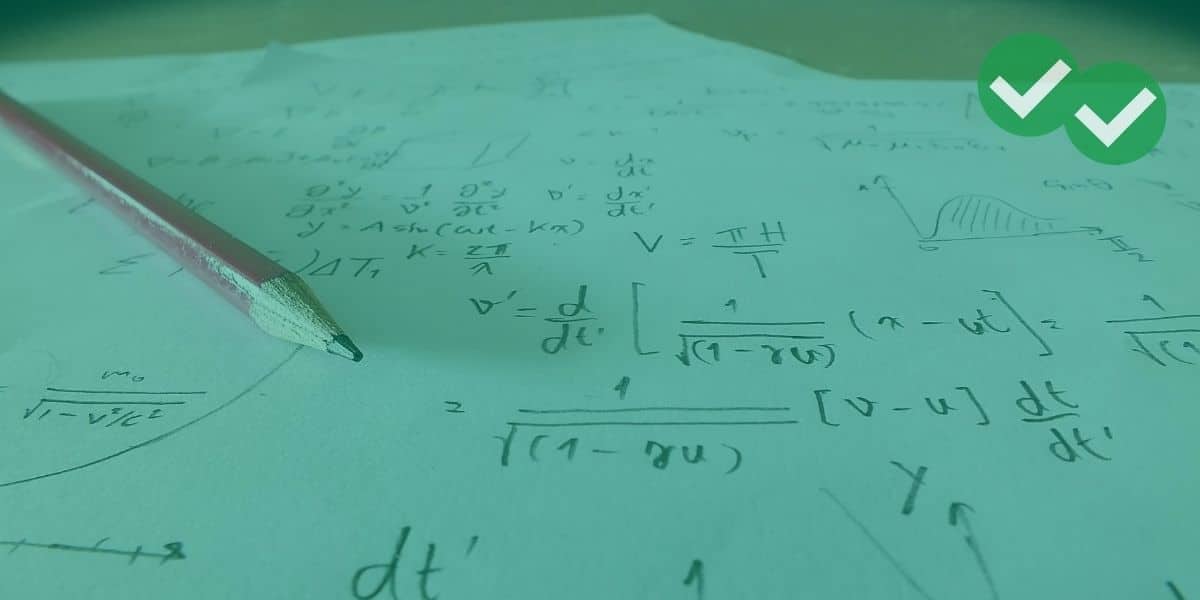

GRE math questions cover a wide range of topics including arithmetic, algebra, geometry, and data interpretation. With so many areas to study, practice is the key to mastering the GRE math section.
Don’t worry—Magoosh is here to help! The GRE math practice questions in this post will help you identify which areas you need to work on and how well you’re prepared for the exam. Keep going for an in-depth look at 15 easy, medium, and hard GRE quantitative practice questions with answers and explanations. If you want to further assess your skill level in the Quant sections, head over to our GRE Quantitative Diagnostic Test!
For each of the five question types you’ll see in the GRE Quant section, we’ve included easy, medium, and hard questions for you to try. For every question in our product, Magoosh tracks how students perform on it so we can make sure each question is perfectly calibrated to mirror the real GRE!
Here’s how we categorize them:
Magoosh students (who are already determined to do well and have usually put in some study time!) answer “easy” questions correctly about 70% of the time. They answer “medium” questions right about 60% of the time, and “hard” questions right about 50% of the time.
Use the table below to jump to each practice question. If you’re returning to this post, skip to the answers and important takeaways.
| Question Type | Easy | Medium | Hard |
|---|---|---|---|
| Quantitative Comparison | Question 1 | Question 2 | Question 3 |
| Multiple-Choice | Question 4 | Question 5 | Question 6 |
| Numeric Entry | Question 7 | Question 8 | Question 9 |
| Multiple-Answer | Question 10 | Question 11 | Question 12 |
| Data Interpretation | Question 13 | Question 14 | Question 15 |
Quantitative Comparison questions (also referred to as Quantitative Reasoning questions) don’t ask you to solve problems. Instead, they ask you to compare two quantities. On the official GRE, these could be equations, variables, angle measurements, or other quantities. Then, you choose the answer that best describes how they are related.
We’ve provided clickable radio buttons for you to select your answer as you go through these GRE math practice questions. This way, you can keep track of your answers and check your work at the end. However, please note that there’s no option to submit them!
Difficulty: Easy
The revenue generated by Company X is divided between Doug and Moira in a 6 to 5 ratio respectively.
| Column A | Column B |
|---|---|
| Moira’s share when the revenue generated by Company X is $15,700 | $7,900 |
The quantity in Column A is greater
The quantity in Column B is greater
The two quantities are equal
The relationship cannot be determined from the information given
Difficulty: Medium
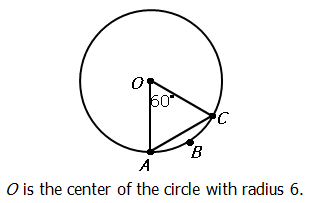
| Column A | Column B |
|---|---|
| Length of arc ABC | 6 |
The quantity in Column A is greater
The quantity in Column B is greater
The two quantities are equal
The relationship cannot be determined from the information given
Difficulty: Hard
| Column A | Column B |
|---|---|
| x | y |
The quantity in Column A is greater
The quantity in Column B is greater
The two quantities are equal
The relationship cannot be determined from the information given
For GRE multiple-choice questions, solve the problem on-screen and select the answer (one of five) that best answers it.
We’ve provided clickable radio buttons for you to select your answer as you go through these GRE math practice questions. This way, you can keep track of your answers and check your work at the end. However, please note that there’s no option to submit them!
Difficulty: Easy
The price of a pair of sneakers was $80 for the last six months of last year. On January first, the price increased 20%. After the price increase, an employee bought these sneakers with a 10% employee discount. What price did the employee pay?
Difficulty: Medium
If 6k 2 + k = 2 and k > 0, then k must equal which of the following?

1

2
3
Difficulty: Hard
In how many different ways can 3 identical green shirts and 3 identical red shirts be distributed among 6 children such that each child receives a shirt?
20
40
216
720
729
On GRE Numeric Entry questions, you solve a given problem by typing your answer into a box provided on-screen.
We’ve provided text boxes for you to type your answer as you go through these GRE math practice questions. This way, you can keep track of your answers and check your work at the end. However, please note that there’s no option to submit them!
Difficulty: Easy
Dharik lives in a house on a straight street. For years, there have been 16 houses on his street to the right of his house and 17 houses on his street to the left of his house. Last year, 5 new houses were built on the same street even further to the left of those houses to the left of Dharik’s house. If these are the only houses on this street, how many houses are on this street?
Difficulty: Medium

If what is the value of n?
Difficulty: Hard
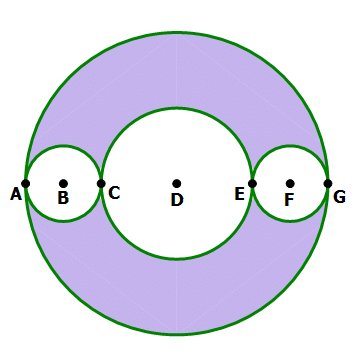
In the diagram, point D is the center of the medium-sized circle that passes through C and E, and it is also the center of the largest circle that passes through A and G. Each of the diameters of the small circles with centers B and F equals the radius of the medium-sized circle with center D. The shaded area is what fraction of the largest circle?
If you encounter a question on GRE quantitative that appears to be multiple choice but does not specify that there is only one correct answer, you have found a multiple-answer question! Select all correct answer choices for this question type.
We’ve provided check boxes for you to mark your answer(s) as you go through these GRE math practice questions. This way, you can keep track of your answers and check your work at the end. However, please note that there’s no option to submit them!
Difficulty: Easy
In a population of chickens, the average (arithmetic mean) weight is 6.3 pounds, and the standard deviation is 1.2 pounds. Which of the following weights (in pounds) are within 1.5 units of standard deviation of the mean?
Difficulty: Medium
 ?
?
Indicate all such expressions.
3 percent of 20x
x percent of 
3x percent of 0.2
0.05 percent of 3x 
Difficulty: Hard
A popular website requires users to create a password consisting of digits only. If no digit may be repeated and each password must be at least 9 digits long, how many passwords are possible?
GRE Data Interpretation questions are similar to multiple choice questions, with a twist: they ask you to look at graphics (primarily charts, graphs, and tables) and solve questions based on those.
We’ve provided clickable radio buttons for you to select your answer as you go through these GRE math practice questions. This way, you can keep track of your answers and check your work at the end. However, please note that there’s no option to submit them!
Difficulty: Easy
ANIMAL DISTRIBUTION IN THE ZOO
| Animal | Percent |
|---|---|
| Lions | 32% |
| Leopards | 16% |
| Ocelots | 20% |
| Tigers | 8% |
| Bobcats | 24% |
If there are 44 leopards at the zoo, what is the zoo’s total animal population?
Difficulty: Medium
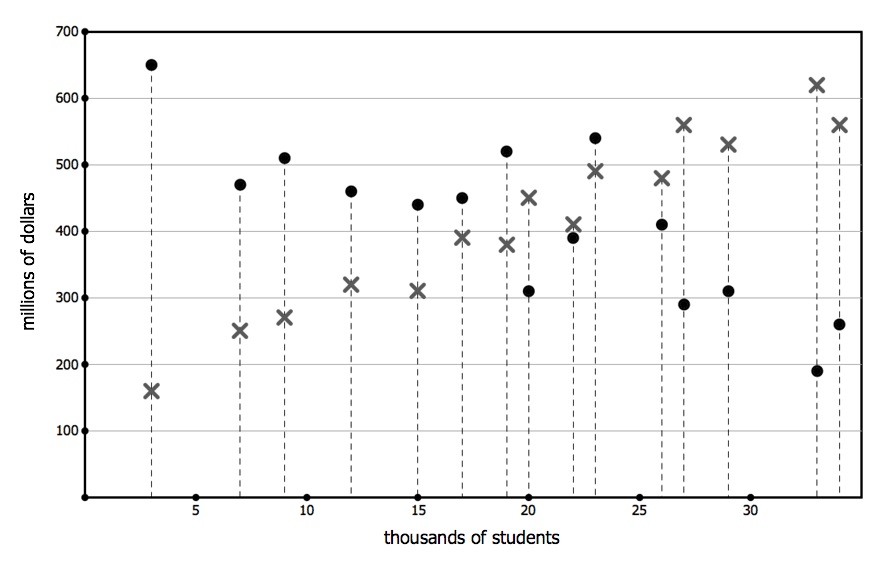
In the diagram above, each of fifteen private colleges is represented by a dot and an X on a vertical line. The X indicates the college’s annual income from tuition in 2008. The dot, above or below on the same dashed vertical line, indicates the college’s annual income in 2008 from investments such as endowments. The base of the vertical dashed line indicates the number of students at that college in 2008.
For how many colleges shown is the investment income in 2008 more than double the same college’s tuition income in 2008?
none
one
two
three
four
Difficulty: Hard
The following chart shows the population of Jenkinsville and the number of televisions in the town through the middle of part of the 20th century.
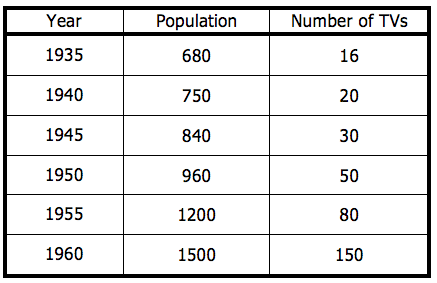
The ratio of people to televisions in Jenkinsville decreased by approximately what percent from 1955 to 1960?
Give your answer to the nearest integer percent and do not enter the percent sign.

Difficulty: Easy
Answer: The quantity in Column B is greater
Watch the video explanation here! Or, go back up to Question 1.
Difficulty: Medium
Answer: The quantity in Column A is greater
Watch the video explanation here! Or, go back up to Question 2.
Difficulty: Hard
Answer: The two quantities are equal
Watch the video explanation here! Or, go back up to Question 3.
Difficulty: Medium
Answers: x percent of 3/2; 3x/200
How did your mini-GRE math practice test go? If you missed some (or even all) of the GRE math sample questions, don’t despair! You can still get the GRE score you want—and get into the graduate schools of your choice. With one big caveat…
When practicing GRE math problems, the key is to figure out why you answered questions incorrectly. Are you having trouble with the Numeric Entry question type? Are questions about geometry giving you the most issues? For a lot of students, it’s Quantitative Comparisons that prove tricky.
At first, this process can be frustrating. But remember, by forcing yourself to figure out the answer instead of immediately turning to an explanation during your GRE math practice, you will understand the problem at a deeper level and be less likely to miss a similar problem in the future. GRE math practice questions can help you get there. This is the best (and really the only) way to improve your score on the GRE. With enough GRE quantitative practice, you’ll get the score you want! And for more good habits that’ll help you get that high score, check out this video:
Special thank you to our contributor, Rachel Kapelke-Dale, for helping with this post!
Editor’s Note: This post was originally published in 2012 and has been updated for freshness, accuracy, and comprehensiveness.
For more personalized support, more practice questions/tests, and lesson videos that are guaranteed to improve your score, you can sign up for an affordable, premium Magoosh GRE prep subscription. Happy studying!
Chris graduated from UCLA with a BA in Psychology and has 20 years of experience in the test prep industry. He’s been quoted as a subject expert in many publications, including US News, GMAC, and Business Because. View all posts
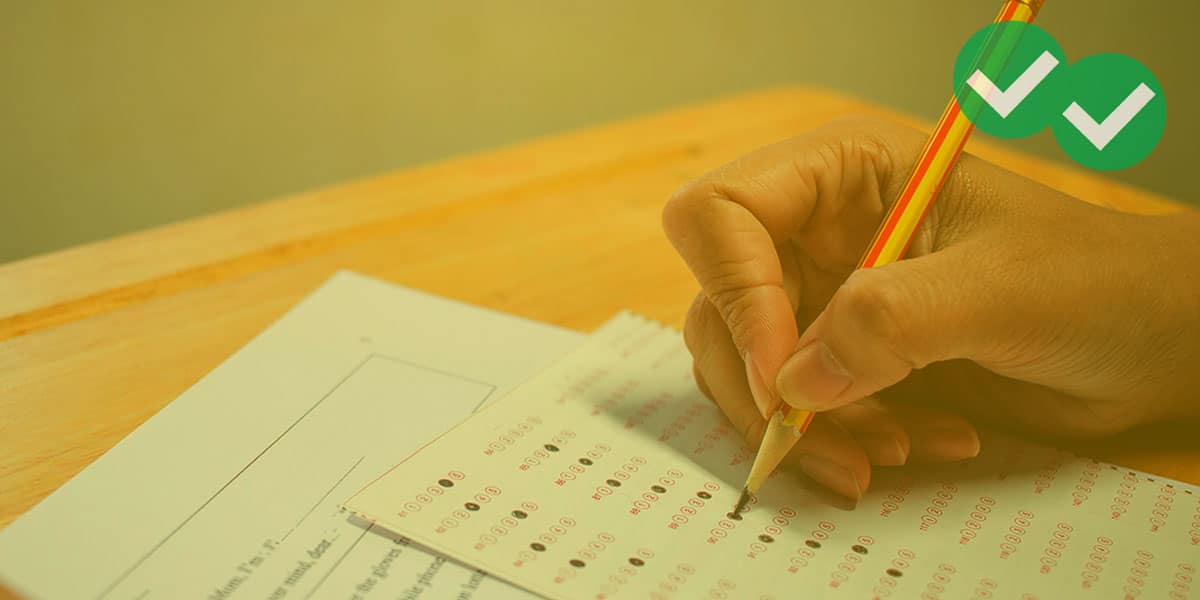
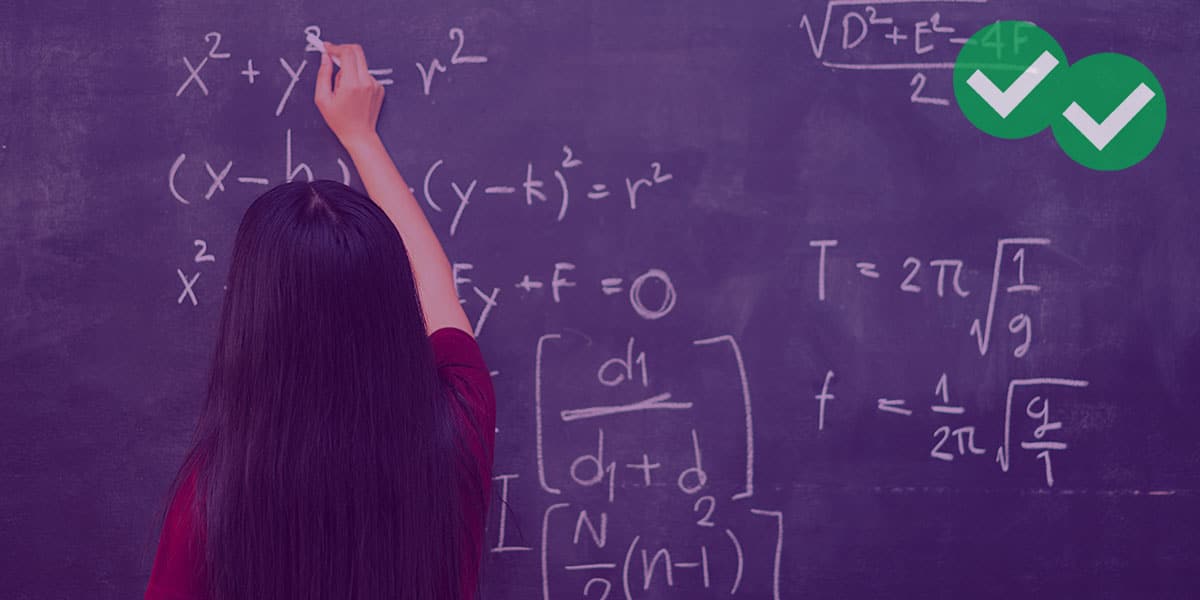
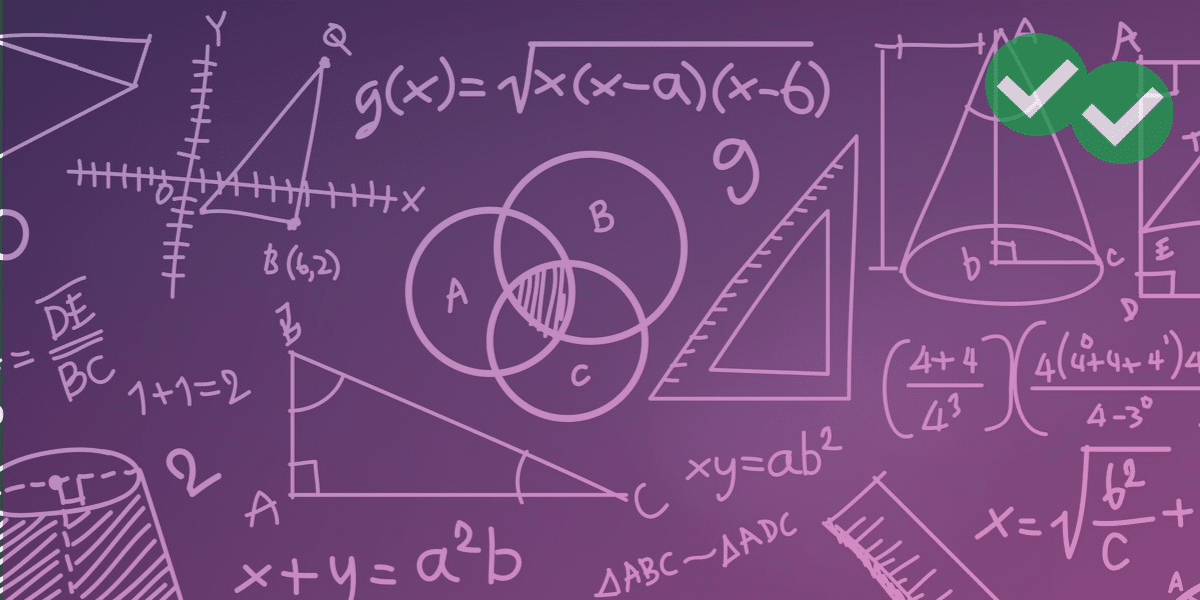
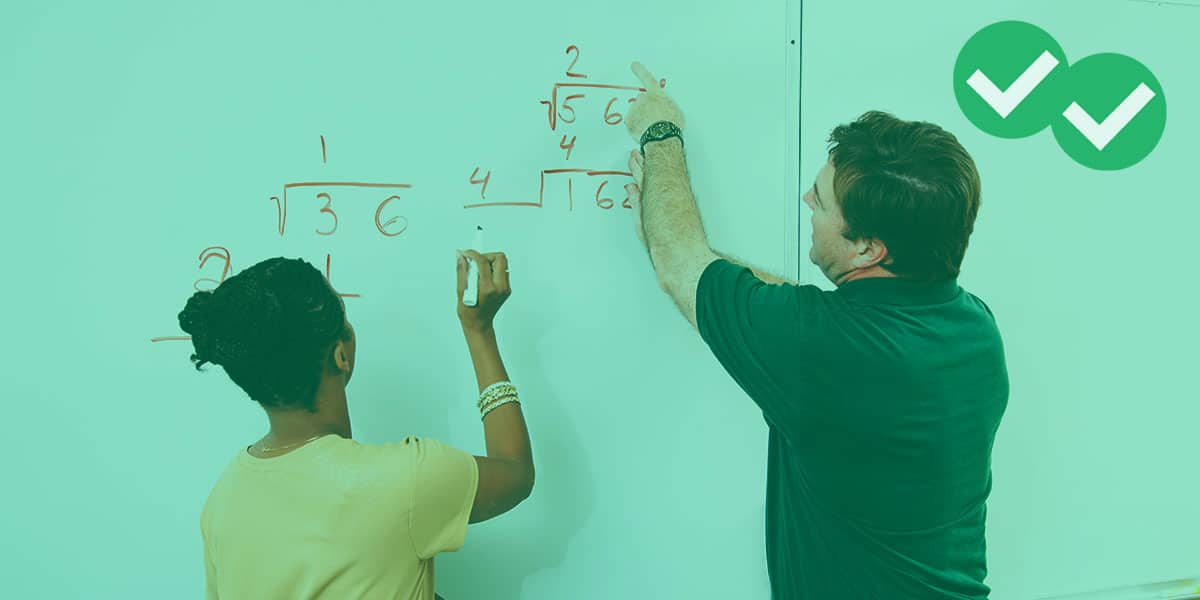





Please leave any questions or suggestions in the comments, we try our best to respond within a few days!
Your email address will not be published.
Hi I want to ask if I can make only the math questions and leave the english questions for applying to a phd studies.
thank you
Hi Ali, The GRE consists of both English and Math sections, and you have to take both on the exam. I hope this helps! 😀
Sree Harsha VyasQuestion 12 – i don’t agree to the explanation. why are we multiplying with 2 wasn’t that combination already include in 10!?
Magoosh Test Prep ExpertHi Sree, We must multiply by 2 because there are two possible password lengths: 9-digit or 10-digit. The first 10! gives all the ways of choosing a nine-digit password, but a 10-digit password is also possible, so the second 10! is all the ways of choosing a 10-digit password.
Neil R John It is nowhere mentioned a 10 digit password is possible then how can we assume? Magoosh Test Prep ExpertThat’s a great question, Neil! We should never make assumptions on the exam. We have evidence that tells us a 10-digit password is possible. First, we need to remember that “digits” includes all of the numbers 0, 1, 2, 3, 4, 5, 6, 7, 8, and 9. That’s a total of 10 options. If no digit is repeated, then the maximum number of digits is 10. Next, the key phrase is “at least 9 digits.” This means the minimum number of digits is 9. Taken together, these statements tell us that a password can be either 9 or 10 digits long. I hope that makes sense! 🙂
Abhinav Asthana I scored 15/15. Can I now say that I will get 170/170 in quantitative section of GRE ? Magoosh Test Prep ExpertHi Ahbinav, The best way to know how you will score on the GRE is to take a full-length test under realistic test-like conditions! This is a good start, but the GRE is a long and difficult test, and it’s about more than just being about to answer a few questions. There are a lot of factors that determine your GRE score, and this is not meant to provide a score estimate.
Alaap DhallI scored 14/15.
But the point is does this test really resonate with the difficulty level of GRE questions?
Or these are the easy to medium ones and we’ll see more difficult question on the test.
I didn’t found any questions on the this test that I can call “Hard”.
It’s a good sign that you didn’t find the hard questions here to be “hard” for you. In terms of difficulty, there’s no way to make a mix of questions that is guaranteed to line up with the real GRE. That’s because the actual GRE exam is adaptive. The better you do in the first 20 questions, the harder your next 20 will be. So instead of trying to represent the actual mix of questions you’ll see on test day, we decided to make a quiz that features all of the question formats, at different difficulty levels. For a truly test-like level of difficulty, use ETS’s adaptive PowerPrep practice tests: https://www.ets.org/gre/revised_general/prepare/powerprep/
I think you’ve made a mistake in the wording of the final problem “If the path and the garden both have an area of x” indicates the combined area is x (area of path + area of inner garden). But based on the solution I think you meant “If the path and the garden each have an area of x”.
Magoosh Test Prep ExpertYou’re right, Calla. 🙂 “Each” really is better wording than “both.” Thanks for bringing this to my attention. I’ve corrected the wording so that the problem is worded more clearly.
Imran Shaikh Why we are dividing with 2,I didn’t understand that part. Magoosh Test Prep ExpertHi Imram, Thanks for writing in! I think something is ‘off’ in our system and I didn’t really see which question you are referring to–can you let me know what question you are asking about?
Its for question #5, square garden question, why are we dividing by 2 in the final step? Magoosh Test Prep ExpertWe divide by 2 because the path runs on both sides of the small square. So the remaining width of the entire small square/surrounding path structure consists of the small square, the part of the path that runs along the left side of the square, and the part of the path that runs along the right side of the square. Since the path is split on both sides of the width of the small square, only half of the remaining length other than the small square represents actual path width. Does that make sense? If you still have some doubts, let me know, and I can do a follow-up comment with a visual diagram. 🙂
can you do that, please? a visual diagram. Magoosh Test Prep ExpertHi Malls, I can’t attach a picture in the comments, but I uploaded a diagram that you can find here. It’s hard to explain this question with only one image, but I tried to capture it here. The line on the left is the length of the garden plus the path (√2x) and the line immediately to the right of it represents the length of the garden (√x). When we subtract the √x from √2x, we are left with w1 and w2, the length of the path on either side of the garden (represented by lines to the right of √x). In order to get the width of the garden, we must divide (√2x – √x) by 2. Does that help?
Kayla ZinkI’m confused on the circle question. In the question it states the diameters of the smaller circles are equal to the radius of the medium circle. So that would in essence mean if the largest circles diameter is 4 as in the answer example, the medium circles diameter would be 2 and the diameters of the smaller circles would be 1. making the radius of the smaller circles 0.5 and their areas .25pi not 1 pi as stated in the answer example. leading to the final answer being 7/8 not 5/8. Am I missing something or is the question just misworded?
Magoosh Test Prep ExpertHi Kayla, I encourage you to go back and look through that answer carefully! In the explanation, we are saying that the radius of the large circle is 4. Here’s how we got there:
-Let’s name the three interior cirlces: Circle 1 is the leftmost one (AC), circle 2 is the larger middle one (CE) and Circle 3 is the rightmost one (EG).
– The radius of the two smaller circles is 1. This means that AB=BC=EF=FG=1. This means that the diameter of Circle 1 and Circle 3 is 2.
– The prompt says that the diameter of the smaller circles (Circles 1 and 2) equals the radius of the larger Circle 3. Since the diameter of Circles 1 and 2 was 2, the radius of the larger Circle 3 is also 2. In other words, CD=DE=2. The diameter of the Circle 3 is 4. This is a confusing question, mostly because of how many things you have to keep straight! I really encourage you to look at that explanation again, and draw the diagram out yourself. That’s what I did 🙂
I have been out of school for a few years and am finally getting ready for the GRE. Is it just me, or are all but 1 of these problems very advanced?
Magoosh Test Prep ExpertHi Boris, Individual experiences of the question difficulty varies. The GRE does not just ask for math knowledge, but for you to navigate through a very specific type of quantitative reasoning. It is this second part that often makes problems trickier. Don’t worry! You can learn both the math concepts and the quantitative reasoning to be able to conquer the GRE.
Hi, In the solution to the 1st Problem, it says |x – 2| = -2 in the last but second step, which in actuality should have been |x – 2| = -7. Kindly, make this change so that it doesn’t confuse ppl like me 😛 Thanks!
Magoosh Test Prep ExpertHi Ash 🙂 As we mentioned in another comment, at this point, we only want to consider the positive value for u, u = 7. So, when we solve for the value of x, we get |x-2| = u
u = 7 |x – 2| = 7
x – 2 = 7 or x – 2 = -7 And we find that x = 9 or x = -5. I hope this clears things up!
Why ‘u’ is considered only to be positive ? It can be negative also right? Since the question was what all possible solutions for | |x-2|-2|=5. Hence x can be -5,9 also -1.
Magoosh Test Prep ExpertHi Adi, ‘u’ must be positive because it is within an absolute value. The absolute value of x-2 must be a positive number, so u must also be a positive number.
Hi Chris,
Tks for great practice question. As for #2, why did you choose ‘root’ mostly as picking number when you examine each choices. The condition in this question is ‘integer’ so I used fraction (eg.1/2). Actually I got wrong on ‘ab’ because I thought ab must be integer always. How I can improve math sense for picking up number?
If you’re dealing with a squared variable, it’s a good idea to immediately think about that variable in terms of square root, if you’re trying to figure out whether or not the variable is an integer. A square root of an integer, once squared, simply becomes the integer itself. But a square root of an integer that is not squared will very often NOT be an integer. That’s why the root is one of the first things you should look at when considering integers in an equation such as (a^2)(b). Fractions are a bad first place to go for a very simple reason— operations with fractions are very difficult to do in your head. On the GRE, attempting to use fractions when you have other options will always slow you down and put you at risk of making mistakes.” There’s no one trick to developing good number sense. But there are a few different kinds of things you can do to build up this skill over time while you prep for the GRE. The trick is to learn how to experiment with numbers and even play games with them on a regular basis. If you’re not a math person, this may sound strange. To wrap your mind around the idea of number sense and how to build it, I recommend checking out Magoosh’s GRE video lesson on developing number sense. This is a very important key concept to mastering GRE quants, so we offer this lesson as a free sample, even to non-subscribers.
Tks a lot!! It was very helpful. if you took a as half take b as 4 and you will see that the answer isn’t the integer anymoreHello Chris, Being extra picky, the path is not of uniform width. Being w the “general” width, at the corners the width is w√2. For the path to be of uniform width, the corners would need to be rounded. This way the answer would involve \pi somewhere. But I believe this consideration would make the question harder than the usual GRE General question. Thank you for the questions!
In the first question,I think you meant |x-2|=-3 instead of |x-2|=-2. If so,then x will be 5,right? Magoosh Test Prep ExpertHi Maahi, This part of the explanation is a bit confusing. We have solved for u = 7, -3. And at this point, we discount u = -3, because an absolute value cannot equal a negative number. So, if we only consider u = 7, we get |x – 2| = 7
x – 2 = 7 or x – 2 = -7 Solving for x, we see that x – 2 = 7 –> x = 9
x – 2 = -7 –> x = -5 Our solutions are therefore x = 9 or x = -5. We can also see that the solutions are x = -5 or x = 9 and not x = 5 by plugging these values in for x: ||x – 2| – 2| = 5 x = -5
||-5 – 2| – 2| = 5
||-7| – 2| = 5
7 – 2 = 5 (YES!) x = 9
||9 – 2| – 2| = 5
||7| – 2| = 5
7 – 2 = 5 (YES!) x = 5
||5 – 2| – 2| = 5
||3| – 2| = 5
3 – 2 = 1 not 5 (NO!) I hope this clears up your doubts! 🙂
Hello Chris, Do you have any tip on how to avoid careless mistakes? What I am noticing during my practice is that I don’t really have much problem in answering questions. However, I do end up making caress less mistakes that cost me points. For example, if a question asks what is the probability a certain event will not happen, I end up answering the probability that certain event will happen. I have repeatedly told myself to read the questions carefully and still end up making mistakes. I noticed that on average, I make one silly mistake every six problem. Sometimes, I don’t read questions carefully and other times I make silly calculation mistakes. I really don’t know how to deal with this. Any tip will be appreciated.
Magoosh Test Prep ExpertHi Peter 🙂 Happy to help! First, it’s great that you’ve already thought about some of the circumstances under which you make these types of mistakes. With that in mind, overall, I’d recommend that you take your time with each question. Reading each question carefully is key to answering what’s actually being asked. If not, it’s very unlikely that you’ll get the right answer. After that, keep in mind that we often make mistakes towards the end of a question. This happens to the best of us in different situations: we drop our guard when we see the finish line. We relax. We lose focus. We rush. All of that doesn’t help us to do well. So, when you see the finish line, when you are nearing the end of the problem, focus even more. Don’t rush. Also, you should ask yourself if you make these types of mistakes more often when you’re tired. If so, taking a short break to stretch, move around, and drink water might be all that you need to refocus. Obviously you won’t be able to take a stretch break in the middle of the test, but you should absolutely do so during your study periods. For every hour of study, let your mind drift off to somewhere else for 5 minutes. Then return to answering problems. As for test day, closing your eyes momentarily can offer a nice break. Keep them closed and count to 10 or 20. Try to push all thoughts out of your mind and just focus on taking long, purposeful breaths. This will help to fight off any exhaustion. I would also recommend reading the following blog post about how to stay focused during the test. Some of these tips can be applied to your study time as well 🙂 How to Stay Focused on the GRE I hope this helps! Happy studying 🙂